The Samsung Galaxy Note5 and Galaxy S6 edge+ Review
by Joshua Ho on October 2, 2015 8:00 AM ESTSystem Performance Cont'd
Now that we’ve covered some of the traditionally CPU-bound tests, we can start to look at tests that more strongly emphasize GPU performance. It’s worth noting here that while 3DMark is supposed to determine gaming and graphics performance, the overall score includes a CPU performance component in the form of a physics test that means it isn't much of a pure GPU test.
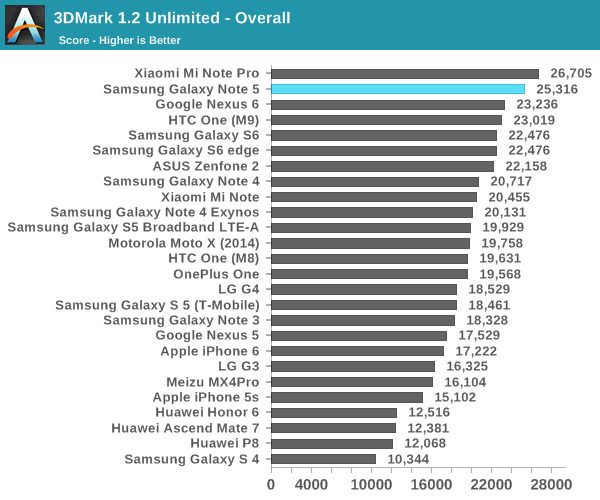
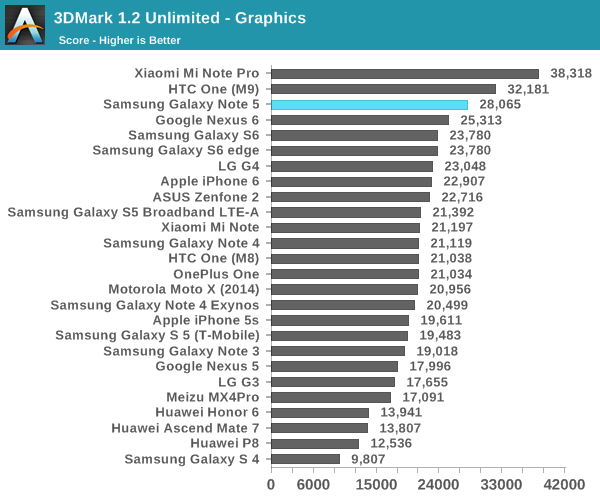
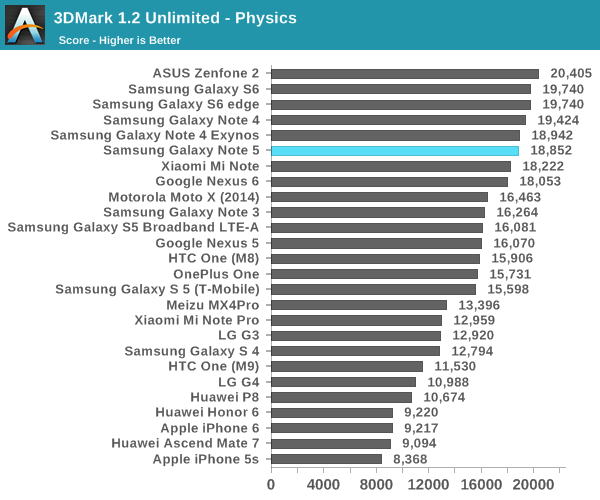

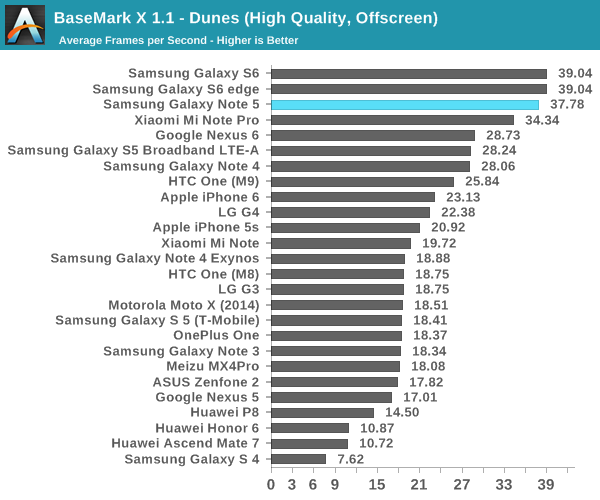
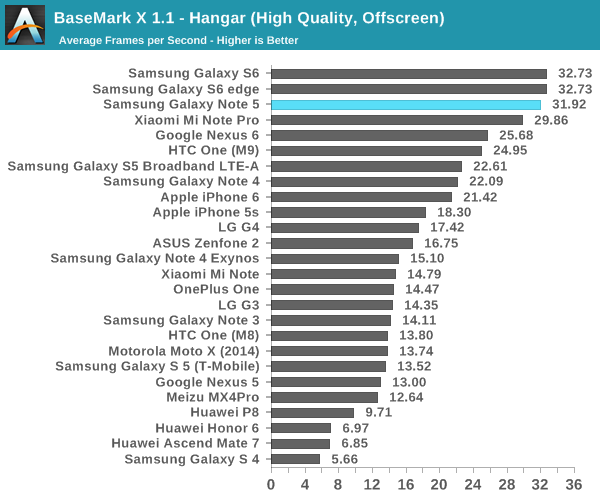
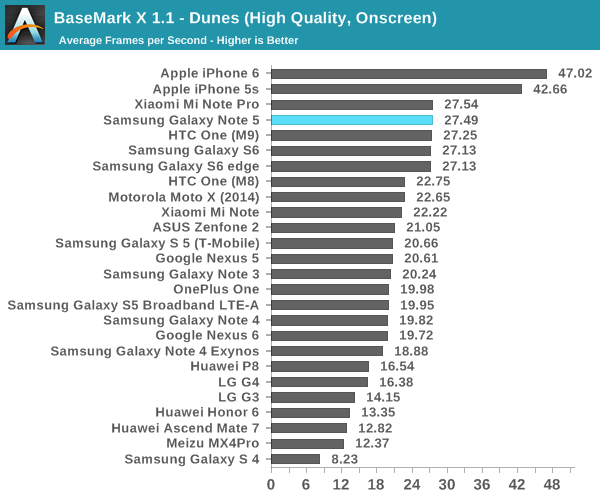
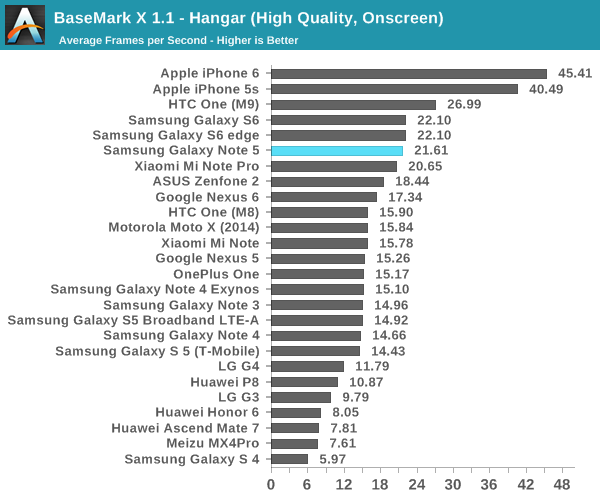
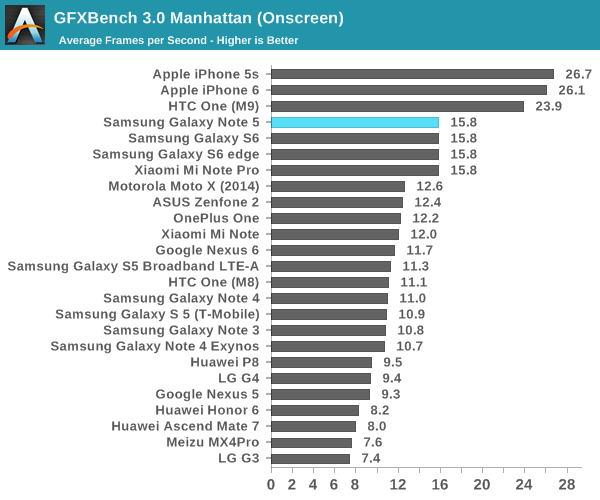
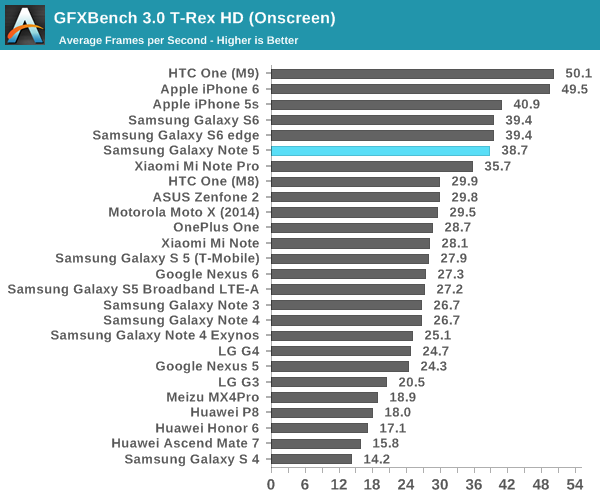
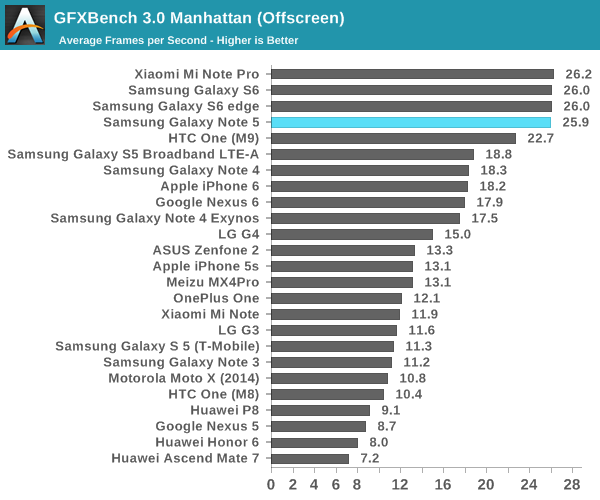
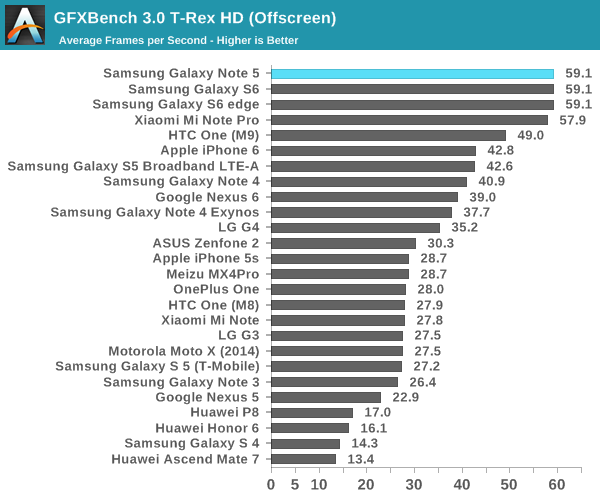
Overall, there's nothing really surprising about these results. The Exynos 7420 should continue to deliver great GPU performance for anyone interested in a high-end phablet or smartphone. There are some improvements in 3DMark in regards to graphics performance, but it's likely that we're just looking at newer drivers as the GPU doesn't heat up fast enough for throttling to be affecting these results.
NAND Performance
At this point, it’s probably not a surprise to know that NAND performance can have very real effects on user experience. If an OEM decides to skimp heavily on storage in order to drive the price down, it’s at least somewhat likely that the device will start to exhibit major IO pauses at some point in the device lifecycle. In order to test this, we rely on our standard storage tests which include Androbench with some custom settings to get more realistic test results along with StorageBench for iOS which is comparable to Androbench.
In the case of the Galaxy Note5 we’re still looking at a UFS storage solution similar to what was found in the Galaxy S6, but it looks like this is slightly newer as the storage is identified as a Toshiba THGLF2G8J4LBATDA chip rather than the Samsung variant that was found in the Galaxy S6. It’s unclear whether Samsung is now multi-sourcing UFS storage for their mobile devices or what distribution exists here.
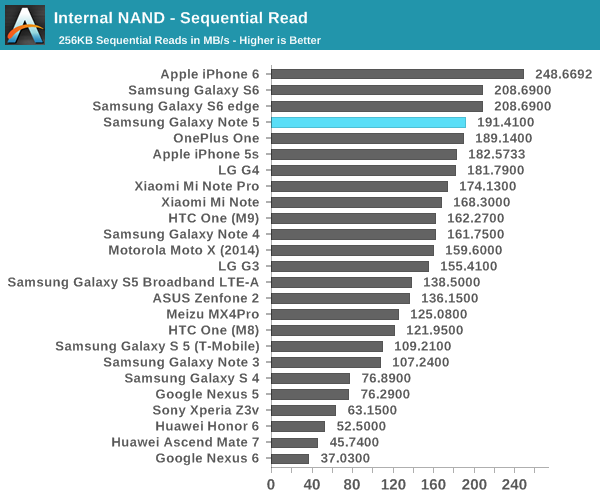
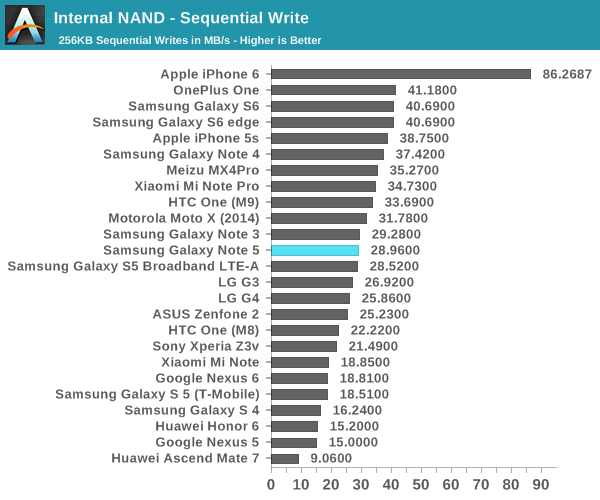
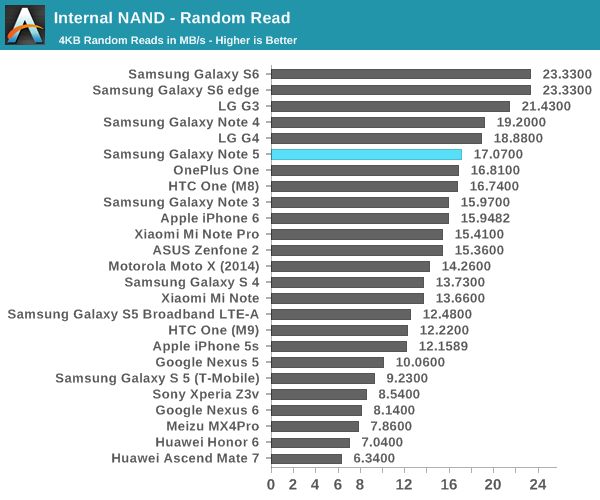
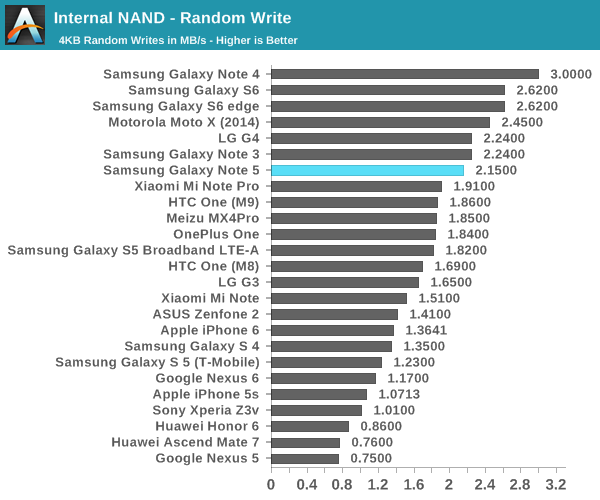
Interestingly, the Note5 regresses a little bit in storage performance relative to the Galaxy S6, which is likely due to the shift to Toshiba's NAND. However, this difference is small enough that in everyday use it's unlikely that it will be noticed. Performance over time should be acceptable as well.










225 Comments
View All Comments
Le Geek - Friday, October 2, 2015 - link
I am curious as to why you referred to the new Note as the Note5 (without space) but the previous note was called Note 4.Ryan Smith - Friday, October 2, 2015 - link
That is the official name according to Samsung. It was the "Note 4" and for this iteration they've removed the space so that it's the "Note5".http://www.samsung.com/global/galaxy/galaxy-note5/
We typically follow the manufacturer's naming convention unless there's a problem in doing so.
danbob999 - Friday, October 2, 2015 - link
"With this generation of AMOLED, Samsung has definitely equaled the best LCDs on the market. I suspect within the next year or two it will be inevitable that Samsung AMOLED will be clearly superior to even the best LCDs"Anandtech has been saying this for years.
Kuzi - Saturday, October 3, 2015 - link
Except that in reality Amoled surpassed LCDs since 2014.Anandtech will not admit Amoled is great until Apple starts using it in their devices (my guess is next year). Of course Apple would bump up the resolution and give it a fancy name, and Anandtech will sing the praises of how amazing Apple's Amoled is. When in reality the screen panel will be made by Samsung or LG :p
PPI will become important and talked about by Anandtech again only when Apple bumps the resolution.
Peichen - Monday, October 5, 2015 - link
If AMOLED is anywhere close to IPS why aren't EIZO, NEC, Dell switch their professional lineup to AMOLED? Why are 31" calibrated IPS monitors going for $3000 while the same money can get you 55" 4K OLED TV?Just because your eyes cannot see the difference doesn't mean professionals cannot. That goes for your rant vis-a-vis iPhone.
Kuzi - Tuesday, October 6, 2015 - link
You can't compare Professional monitors with TVs. If these Dell. NEC monitors were using OLED technology then probably they would have cost double the amount.Also keep in mind that color accuracy of the Samsung OLED screens only became comparable to the best IPS LCDs since a year ago or so. So these manufacturers didn't get the chance yet to move to OLED. There are only cost and capacity considerations, it might be that Samsung is keeping all the capacity for themselves at this time.
Don't be surprised when in a year you see Apple move to OLED.
thedons1983 - Sunday, October 18, 2015 - link
LCD is crap compared to OLED, or AMOLED, there is no denying that, and those who don't buy into that fact, are utter morons. The reason they aren't yet ubiquitous, is cost. Every display will eventually replace LCD, with something superior, like OLED. Hence why top end Tvs are now transitioning to that tech, because it is simply much, much better technology. Apple just can't afford it, hence why they persist with inferior tech.Dobson123 - Friday, October 2, 2015 - link
Maybe it would be a good idea to address concerns regarding battery durability and quickcharge in the light of the non-removable battery. What should I do if my battery lost half it's capacity after 2 years? A normal user just can't buy a new on and change it himself.Peichen - Monday, October 5, 2015 - link
I'd like to know this as well. Maybe someone can go crazy and charge and discharge popular smartphones using its default charger for 100/200 cycles and run the same battery test to see if there are obvious signs of battery degradation.An iPhone 6s+, Z5, V10, Note 5, Moto X, Oppo something.
Infy2 - Friday, October 2, 2015 - link
Is the maximum display brightness reported here achievable simply with the brightness slider or just with the boost feature triggered by direct sunlight?